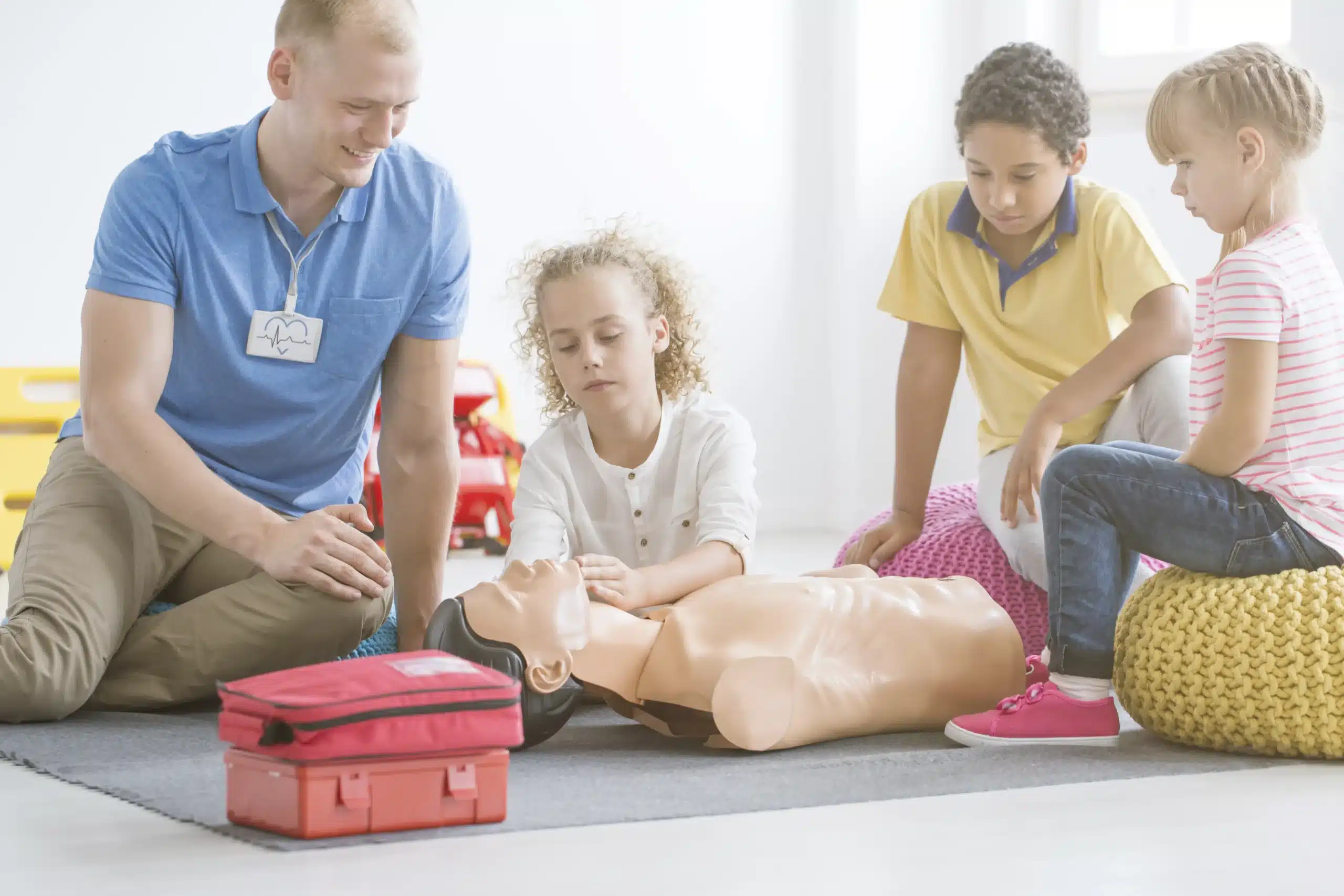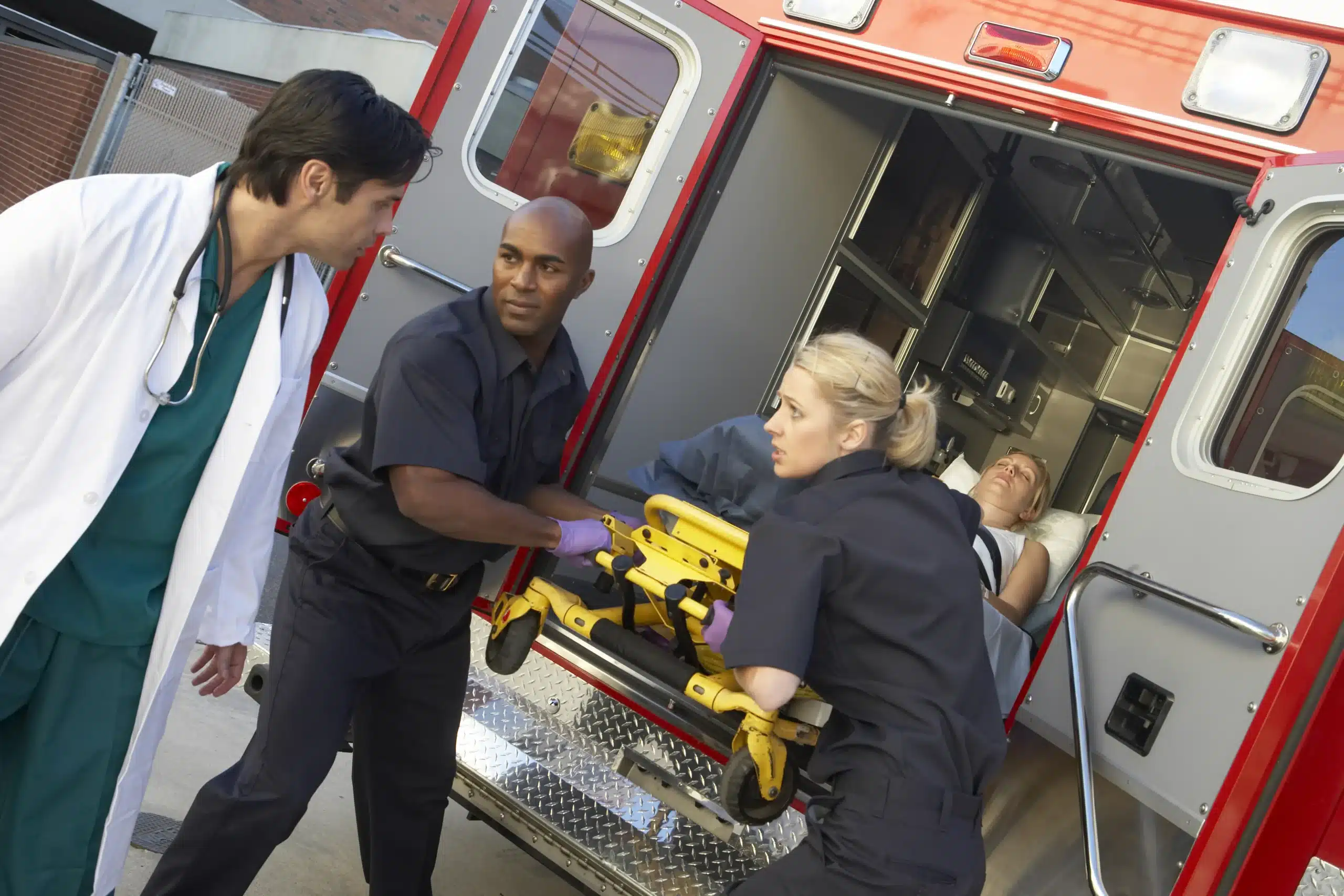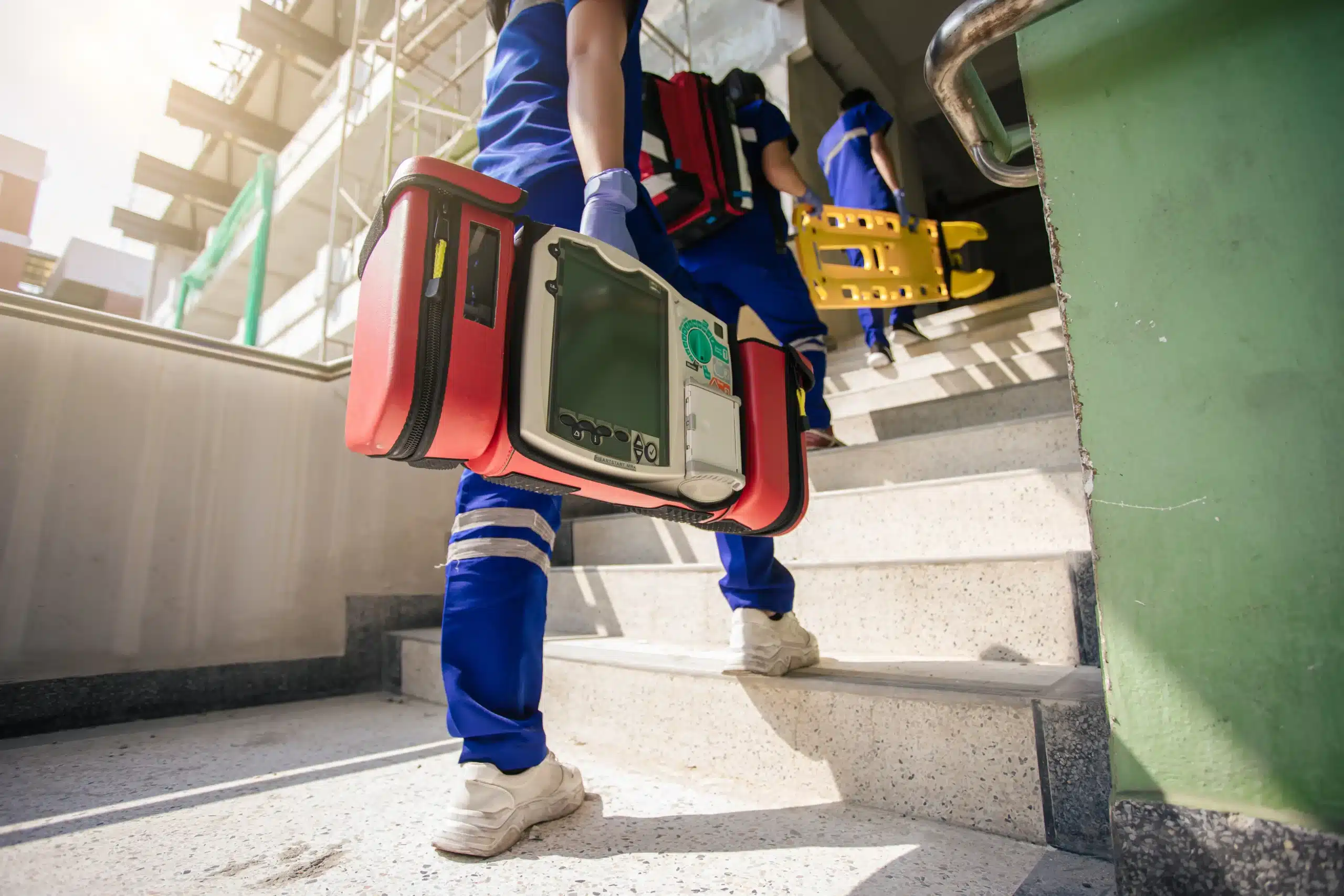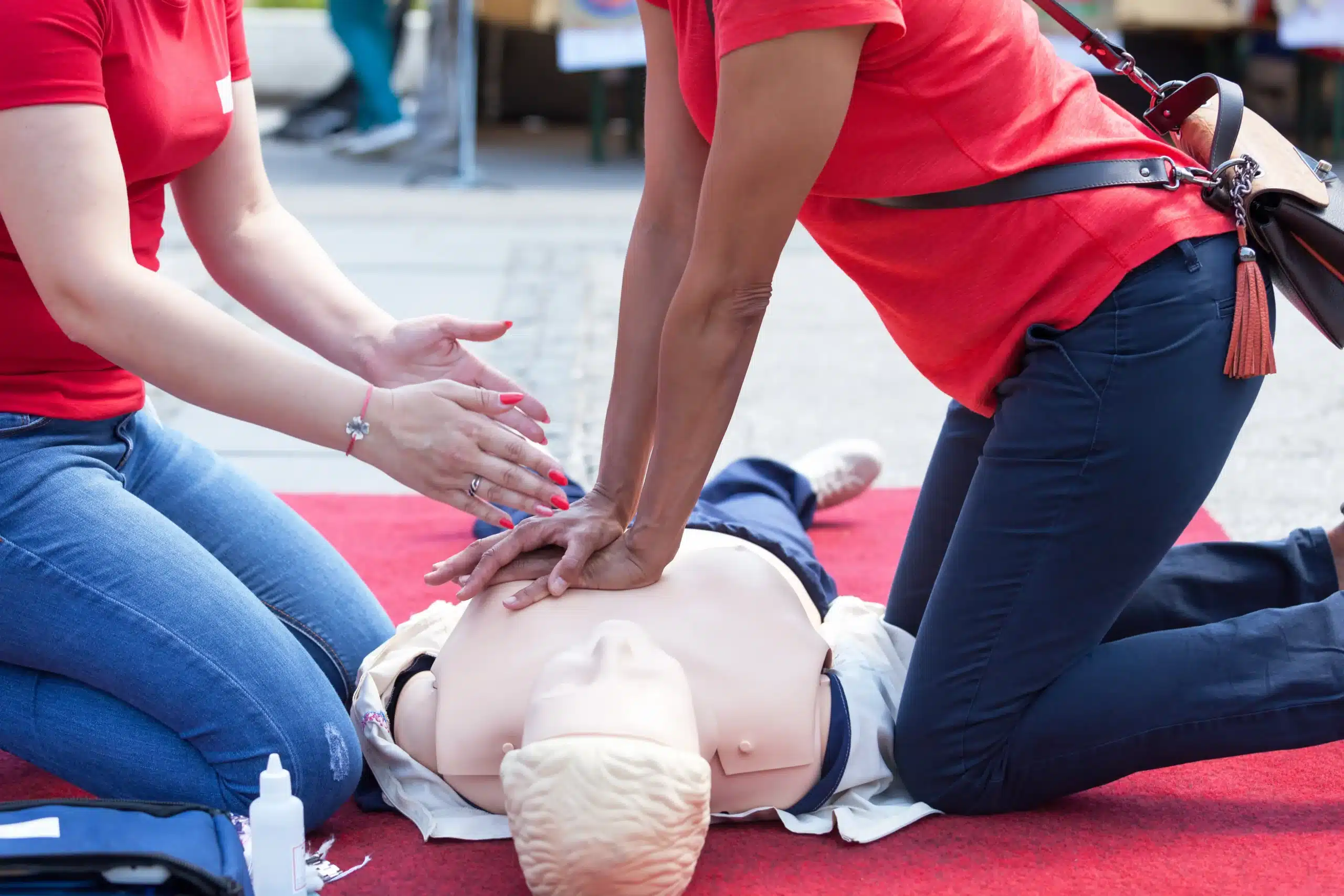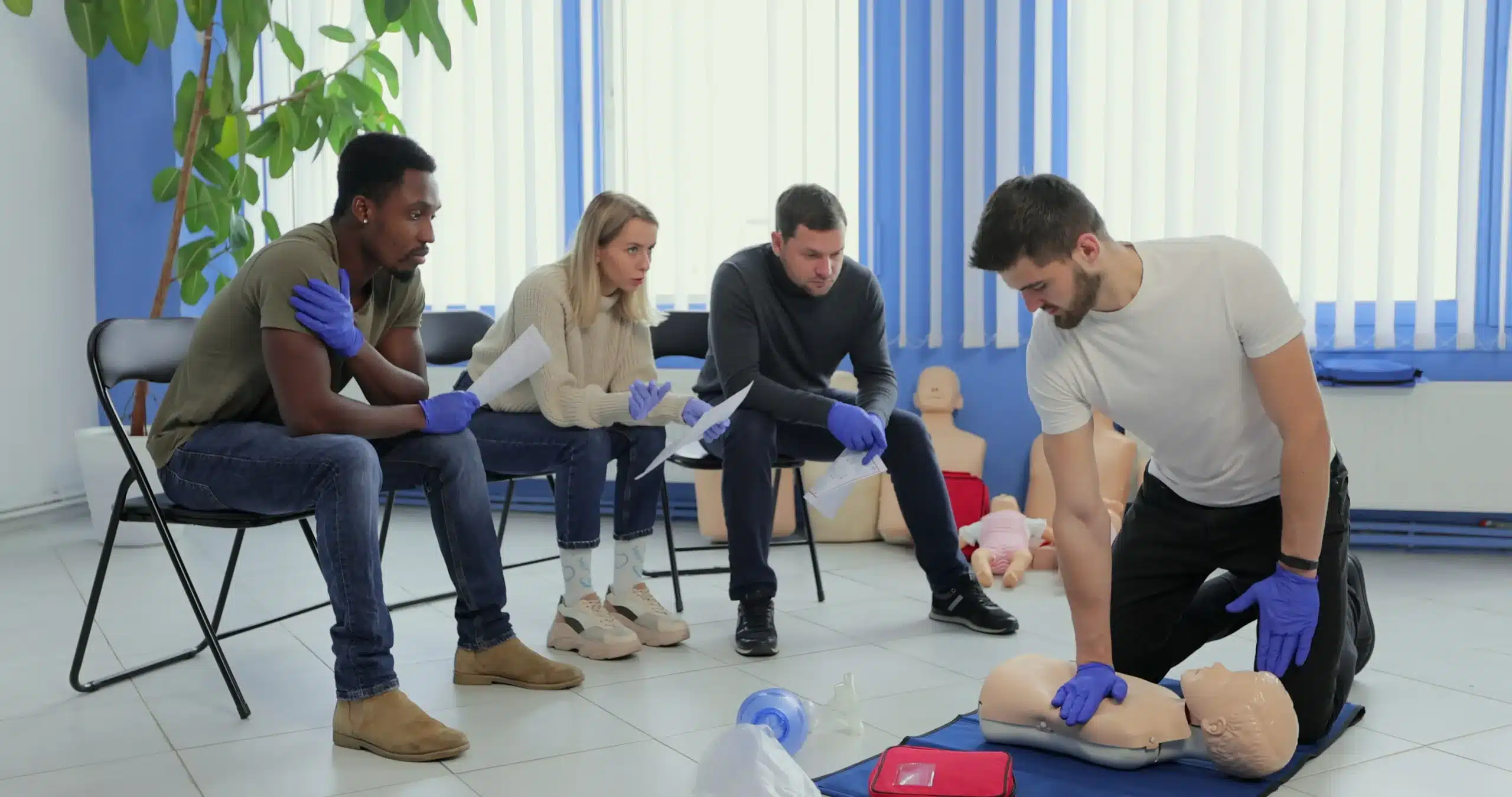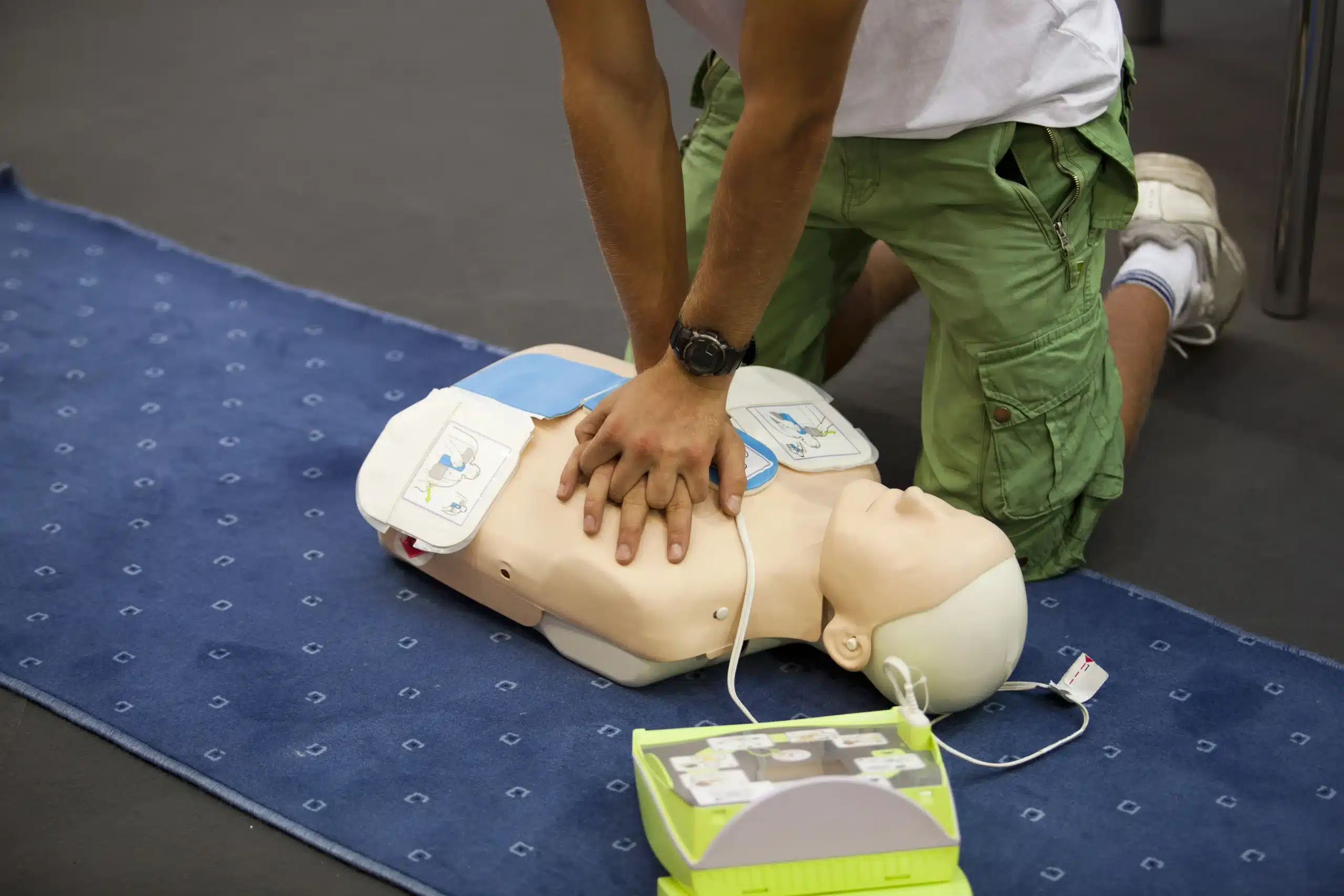Taking a CPR class can be one of the most empowering decisions you ever make. It equips you with the skills and confidence to respond effectively during medical emergencies, potentially saving a life. This guide is your go-to resource for CPR training in Port Chicago, providing a comprehensive overview of everything you need to know. We’ll explore the different types of CPR courses available, discuss the associated costs and potential discounts, and guide you through the certification process. Whether you’re a medical professional, a concerned parent, or simply someone who wants to be prepared, this guide will provide you with the information and resources you need to become CPR certified and make a real difference in your community.
Key Takeaways
- CPR certification empowers you to act in emergencies: Whether for personal growth or professional requirements, CPR training provides valuable skills and can open up career opportunities. Choose from various learning formats to fit your lifestyle.
- Find the right CPR course by considering your needs and learning style: Evaluate factors like cost, schedule, and the type of certification required (CPR, BLS, ACLS, etc.). Reputable providers like Martinez CPR Classes and the American Red Cross offer a range of options.
- Regular practice keeps your CPR skills sharp: Refresh your knowledge and maintain your confidence by taking refresher courses and practicing regularly. Staying up-to-date on the latest guidelines ensures you’re always prepared to help.
What is CPR Training?
CPR training equips you with the life-saving skills to respond to cardiac arrest and other medical emergencies. It involves learning chest compressions, rescue breaths, and how to recognize the signs of a heart attack or stroke. Different learning formats cater to various needs and preferences. Let’s explore the main types of CPR training available.
In-Person CPR Classes
In-person CPR classes provide hands-on learning in a traditional classroom setting. Led by certified instructors, these courses offer personalized feedback and allow you to practice your skills on mannequins. Organizations like the American Red Cross and Martinez CPR Classes offer in-person CPR training. These classes cover essential techniques and often provide certification valid for two years, meeting workplace and licensing requirements. The interactive environment allows you to ask questions, clarify doubts, and gain confidence in your abilities. For many, the face-to-face interaction is invaluable.
Online CPR Courses
Online CPR courses offer a flexible alternative to traditional classes. They allow you to learn at your own pace, fitting the training around your schedule. Online CPR courses typically cover the same core material as in-person classes, including recognizing emergencies, performing CPR on adults, children, and infants, and using an AED. While online courses offer convenience, it’s important to choose a reputable provider that aligns with American Heart Association guidelines. Online CPR courses can be a budget-friendly option.
Blended CPR Learning
Blended learning combines the best of both worlds: online instruction and in-person practice. You’ll complete the theoretical coursework online, then attend a shorter in-person session to demonstrate your skills and receive feedback from an instructor. This format offers flexibility while ensuring you have the opportunity to practice hands-on techniques. Blended learning CPR courses cover the latest CPR guidelines, including hands-only CPR and CPR with rescue breaths. This approach can be particularly helpful for those who prefer a self-paced learning environment but also value the guidance of an instructor.
CPR Training Costs
CPR training costs vary depending on several factors, including the type of course (CPR, BLS, ACLS, PALS, etc.), the training format (online, in-person, or blended learning), the location, and the provider. Understanding these costs upfront helps you budget effectively and choose the best training option for your needs.
Average CPR Course Prices
Online CPR and BLS renewal courses typically range from $12 to $50. This digital format offers a convenient and often more affordable way to renew your certification. For those preferring hands-on learning, in-person BLS renewal classes usually cost around $60. In-person training allows for direct interaction with instructors and practice on mannequins.
Additional CPR Training Fees
Beyond the base course fee, there may be additional costs to consider. Some providers charge extra for certification cards, study materials, or recertification exams. Combined CPR and First Aid certification can range from $40 to $60 per person, according to resources like My CPR Certification Online. It’s always wise to ask about any potential extra fees when you register for a course.
CPR Training Discounts
Look for potential discounts to make your CPR training more affordable. Many organizations, such as the American Red Cross, offer discounts for group registrations, students, military personnel, or returning customers. Martinez CPR Classes is one example of a provider offering discounts for group classes. Some providers also offer occasional promotions or package deals that combine multiple courses at a reduced price. Check with your chosen training center or browse their website for discount opportunities. Saving money on training allows you to invest more in other essential safety resources. For example, discounts on training supplies can be helpful when equipping yourself or your team.
Get CPR Certified
So, you’re ready to learn CPR? Great! Knowing CPR can truly make a difference. This section covers what to expect during a CPR class and how long your certification is valid.
What Happens During CPR Training?
CPR training comes in several formats. You can choose online, in-person, or blended learning (a mix of online and in-person) through organizations like the American Red Cross and the American Heart Association. You’ll receive a certification upon completion, typically valid for two years. In-person and blended learning meet requirements for professional licensing and OSHA, while online-only certification may not meet all professional needs. Check with your employer or licensing board to confirm which type of certification you need.
Most CPR courses emphasize hands-on practice. You’ll likely work with a partner, rather than performing solo in front of everyone. Don’t worry about feeling awkward—instructors create a supportive environment and guide you through each step. They’re experienced in helping people become confident in their CPR skills.
How Long is CPR Certification Valid?
Your CPR certification, especially one that is OSHA-compliant, is generally valid for two years. There’s often a short grace period of about 30 days after the expiration date to renew. However, it’s always best to renew before it expires. You can find BLS renewal courses and other recertification options to keep your skills sharp. Staying current with your CPR certification ensures you’re always prepared and up-to-date on any changes in CPR guidelines.
Top CPR Training Providers in Port Chicago
Finding the right CPR training can feel overwhelming, so I’ve compiled a list of reputable providers in Port Chicago to help you get started. Whether you’re looking for basic CPR certification or more advanced training, there’s an option for you.
Martinez CPR Classes
Martinez CPR Classes offers a comprehensive range of American Heart Association (AHA) courses, including BLS, ACLS, PALS, and First Aid. They’re known for their flexible scheduling, with classes available daily from 8 am to 10 pm. Their commitment to affordability makes them a great option, and they even offer discounts for group classes, which is perfect for workplaces or community groups. For healthcare professionals needing to renew their certifications, Martinez CPR Classes also provides RQI programs. Their convenient location serves not only Martinez but also the surrounding areas of Port Chicago and Benicia.
American Red Cross
The American Red Cross is a well-established provider of health and safety training, including CPR and First Aid. Their courses equip you with the knowledge and skills to respond confidently in emergencies. The Red Cross offers a variety of options, from basic CPR/AED training to more specialized certifications. Check their website for course schedules and availability in the Port Chicago area.
American Heart Association
While the AHA doesn’t directly offer classes, they set the standards for CPR training. Many organizations and training centers, like Martinez CPR Classes, use the AHA curriculum. Finding an AHA-certified course ensures you’re receiving high-quality instruction based on the latest scientific guidelines. You can review some CPR certification requirements to get a better understanding of what to expect.
Local Healthcare Institutions
Hospitals and other healthcare institutions in the Port Chicago area often provide CPR training to their staff and sometimes offer classes to the public. Check with facilities like Sutter Delta Medical Center or Kaiser Permanente to see if they have any upcoming training sessions. The American Heart Association’s Illinois chapter is also a good resource for finding local training opportunities. They often partner with community organizations to offer CPR education and resources.
Choose the Right CPR Training
Finding the right CPR training is crucial for effectively learning these lifesaving skills. With different learning styles and schedules, one size doesn’t fit all. Let’s break down how to choose the best CPR course for you.
Factors to Consider for CPR Training
Think about what works best for your learning style and how much time you have. Do you thrive in a hands-on, classroom environment? Or do you prefer the flexibility of online learning? Many organizations, including the American Red Cross, offer various formats, such as in-person CPR training classes, online courses, and blended learning (a mix of online and in-person sessions). This variety lets you pick a course that truly fits your needs and preferences.
Match CPR Training to Your Needs
Your specific needs should guide your training choice. Are you getting certified for the first time, or do you need a CPR renewal? Renewal options often include online, in-person, or blended learning formats. Consider your learning style, availability, and budget to find the most effective training. For example, if you’re a healthcare professional, you might need a more advanced course like ACLS or PALS. If you’re looking for group discounts, check for group CPR training options.
CPR Training Prerequisites
Before signing up for any CPR course, understand the prerequisites. While fully online, pre-recorded training isn’t typically accepted for CPR certification, blended learning courses that combine online components with in-person skills sessions are often permitted. Always double-check that the course you choose comes from an approved training organization like the American Heart Association and that a certified instructor will evaluate your skills. This ensures you receive high-quality training and are prepared for real-life emergencies. For reliable training options, consider local CPR classes.
Benefits of CPR Certification
Getting CPR certified isn’t just about checking a box; it’s about equipping yourself with skills that can make a real difference. Whether for personal growth, professional requirements, or simply the peace of mind that comes with being prepared, the benefits are undeniable.
Personal & Professional Advantages
CPR certification offers a wealth of advantages, both personally and professionally. Knowing you can potentially save a life brings confidence and empowerment. Imagine being the person who steps up during a crisis at a little league game or a family gathering – your quick thinking and training could be life-saving. This ability to respond effectively in emergencies is invaluable. CPR training empowers you to act when it matters most.
Professionally, CPR certification can open doors. Many healthcare roles, childcare positions, and even other fields like education and coaching require or prefer candidates with current CPR certification. It signals to employers your commitment to safety and preparedness. Maintaining your BLS certification demonstrates adherence to the latest American Heart Association (AHA) guidelines and shows you’re dedicated to providing high-quality care. Plus, regular training keeps your skills sharp, essential since studies show CPR skill retention can decline over time.
Meet OSHA Requirements
Beyond personal and professional growth, CPR certification often fulfills important safety requirements. Many workplaces, particularly those governed by the Occupational Safety and Health Administration (OSHA), mandate CPR training for specific roles. Ensuring you have the right CPR training that meets OSHA requirements keeps you compliant and contributes to a safer work environment. Bystander CPR can dramatically increase the chances of survival; being certified makes you a vital link in the chain of survival. Learn more about CPR certification and how it can benefit you.
Prepare for Your CPR Training
Getting ready for your CPR class doesn’t have to be stressful. A little preparation goes a long way toward a smooth and successful training experience. Here’s what you should know:
What to Bring to CPR Class
While your CPR instructor will provide the training equipment, there are a few things you should bring with you. These items will help streamline the check-in process and ensure you’re ready to learn. Consider bringing a photo ID, especially if you’re renewing a previous certification. If you have an existing CPR certification card, bring that as well. Finally, gather any pre-course materials provided by your training center.
CPR Pre-Course Study
One of the best ways to prepare for your CPR training is to familiarize yourself with the material beforehand. If your training center offers pre-course reading or online modules, take advantage of these resources. Even reviewing basic CPR steps before class can improve your retention. Confirming your current BLS certification status and expiration date is also helpful, especially if you’re looking to renew. Knowing where you stand with your BLS certification will help you understand the renewal process.
Maintain Your CPR Skills
Once you’re CPR certified, regular practice is key to staying sharp and confident in your abilities. It’s easy for those skills to fade, but consistent upkeep can make all the difference in a real emergency. Here’s how to keep your CPR skills current:
CPR Refresher Courses
Think of CPR refresher courses like a tune-up. Research shows that CPR skills decline significantly within months of initial training. Taking a CPR refresher course is a smart way to brush up on the latest techniques and maintain your proficiency. These courses reinforce core concepts and address any updates to CPR guidelines. Regular refreshers at Martinez CPR Classes will help you stay confident and prepared to act quickly and effectively when needed.
Practice CPR
Regular practice is essential for maintaining muscle memory and confidence in performing CPR. Most CPR training emphasizes hands-on practice in a supportive group setting. This allows you to become comfortable performing compressions and rescue breaths in a low-pressure environment. Even practicing on a mannequin at home can significantly improve your response time and technique. Consider finding a partner to practice with regularly.
Stay Updated on CPR Guidelines
CPR guidelines are periodically updated to reflect the latest scientific research and best practices. Staying informed about these changes is crucial for providing effective CPR. The American Heart Association is a great resource for staying up-to-date on the latest CPR guidelines. Review updated materials and incorporate any new techniques into your practice sessions. Staying current ensures you’re always prepared to deliver the most effective care.
Common CPR Concerns
It’s normal to have a few questions before signing up for a CPR class. Let’s address some common concerns to help you feel prepared and confident about getting certified.
Online vs. In-Person CPR Training
One of the first questions people ask is whether to take CPR training online or in person. Both have their pros and cons. Online courses offer flexibility and can be more affordable, often ranging from $12 to $50 for BLS renewal. However, in-person classes, like those offered at Martinez CPR Classes, provide hands-on practice with a certified instructor and allow you to ask questions in real time. In-person BLS renewal classes typically cost around $60. The best choice depends on your learning style and budget.
CPR Course Difficulty
Many people worry about the difficulty of CPR training. It’s understandable to feel a little nervous, especially if you’re not used to medical procedures. Rest assured, CPR is a straightforward skill to learn. Even if you’re shy, the instructors create a supportive environment where mistakes are a natural part of learning. Think of it like learning to ride a bike—it might feel a bit clumsy at first, but with practice, it becomes second nature. Plus, the knowledge that you’re gaining a life-saving skill makes it all worthwhile. You can find support and encouragement from others who have felt the same way on online forums.
Flexible CPR Training Options
Life gets busy, so finding a CPR class that fits your schedule is essential. Martinez CPR Classes offers daily CPR courses from 8 am to 10 pm, seven days a week. We cover everything from basic CPR to more advanced certifications like BLS, ACLS, PALS, and First Aid. This flexibility makes it easier to find a time that works for you, whether you’re a busy parent, a healthcare professional, or someone with a packed work schedule. We understand that convenience is key when fitting training into your life. You can find similar convenient options with other providers like Safety Training Seminars.
Related Articles
- CPR Training in Martinez: Your Complete Guide – Martinez CPR Classes
- Why CPR Saves Lives and How You Can Learn It
- CPR Courses in Port Chicago: Find the Right One for You – Martinez CPR Classes
- BLS Renewal in Martinez: Your Easy Guide – Martinez CPR Classes
- Group CPR Discount Classes in Martinez, CA – Martinez CPR Classes
Frequently Asked Questions
Q: How much does CPR training cost? CPR training costs vary depending on the type of course, format (online, in-person, blended), location, and provider. Online CPR and BLS renewal courses typically range from $12 to $50, while in-person BLS classes are usually around $60. Keep in mind that there might be additional fees for certification cards or study materials. Look for discounts, often offered for groups, students, or military personnel.
Q: What if I’m nervous about performing CPR in front of others? Most CPR classes emphasize hands-on practice, but you’ll likely work with a partner in a supportive environment. Instructors understand that people can be nervous and guide you through each step. The focus is on building confidence, not performing perfectly in front of a crowd.
Q: How long is my CPR certification valid? CPR certifications are generally valid for two years, often with a short grace period for renewal. It’s always best to renew before it expires to maintain your skills and ensure you’re up-to-date on any changes in CPR guidelines. Many providers offer refresher courses to help you stay current.
Q: What’s the difference between online and in-person CPR training? Online CPR training offers flexibility and affordability, allowing you to learn at your own pace. In-person classes provide hands-on practice and direct interaction with an instructor. Blended learning combines online coursework with in-person skills sessions. The best choice depends on your learning style, budget, and any professional requirements.
Q: How do I choose the right CPR class for me? Consider your learning style, schedule, budget, and any specific requirements for your job or licensing. Think about whether you prefer online, in-person, or blended learning. Also, check if the course is offered by a reputable provider and aligns with current American Heart Association guidelines. If you need a specific type of certification, like BLS, ACLS, or PALS, make sure the course covers that.
